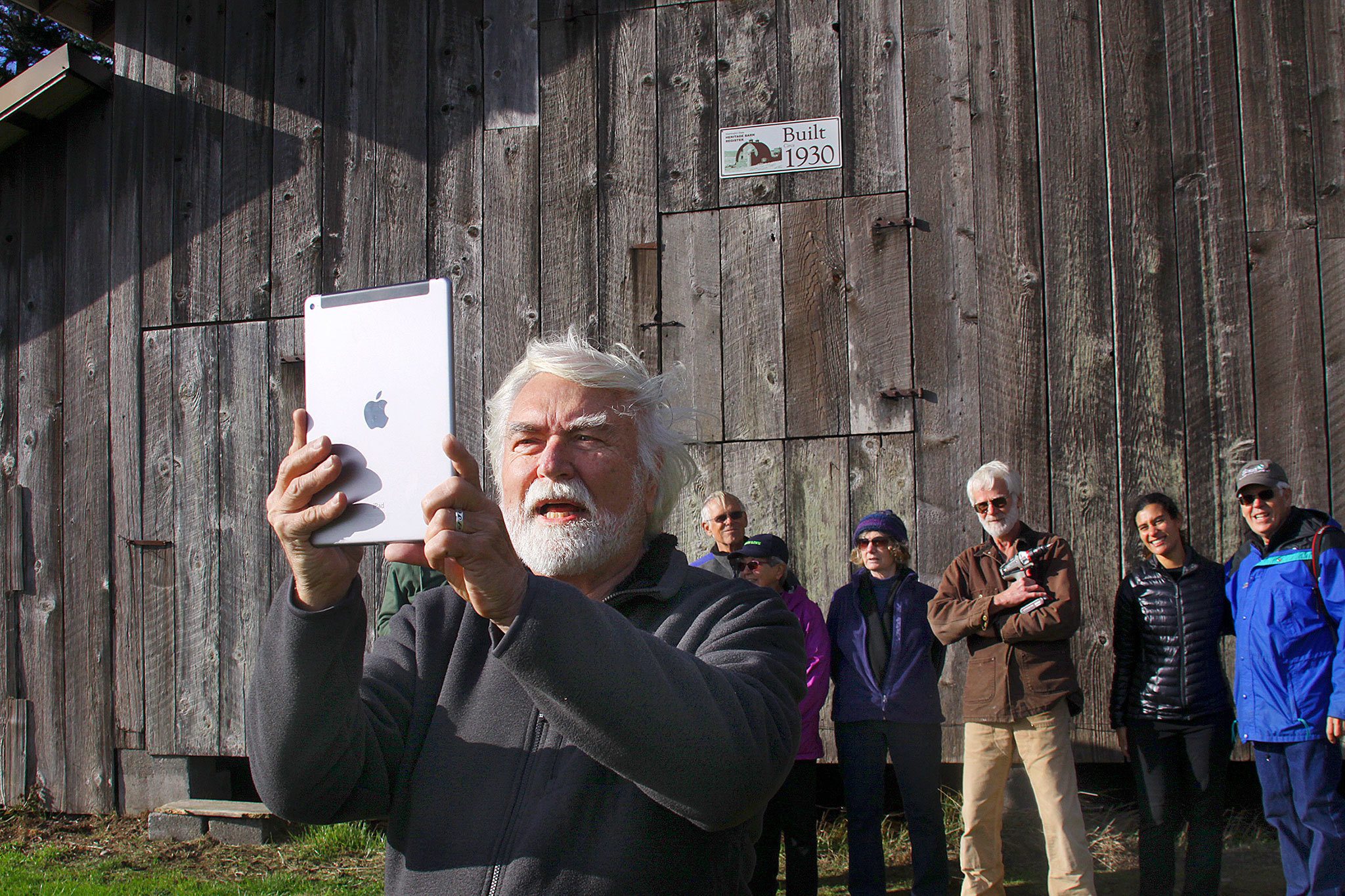The first time Harrison Goodall stepped inside the structure known as the Sheep Barn, he fell through the floor.
He returned earlier this month, three years after leading a major restoration project at the barn, and led a group back inside the revamped structure — only to bump his head on the way in.
“Watch your head,” he called out. “Of course, I say that after I bumped mine.”
Loving old barns doesn’t come without occasional heartache and a few headaches.
Goodall, an architectural conservator from Langley who has a passion for restoring historic buildings, led a tour of one of the more iconic, yet lesser known, pole barns on Ebey’s Prairie that’s been part of the landscape since around 1930.
At the crux of the occasion was an informal gathering on Nov. 3 to celebrate the barn’s honorary distinction of being added to Washington’s Heritage Barn Register. A plaque was mounted to the front of the barn boasting its new state designation, which commemorates the structure as historically significant and also makes it eligible for more grants toward future restoration.
Members from the Nature Conservancy, which owns the land on which the barn sits, Ebey’s Landing National Historical Reserve, and the community were on hand to get a closer look at the barn and learn more about its history and the efforts to preserve it.
Goodall led a two-week project in the summer of 2013 to restore the barn, which was once part of the massive Pratt family estate that covered more than 400 acres of the prairie, adjacent forest and the scenic bluff.
Millionaire Frank Pratt Jr. bought up properties that contained aging structures that he deemed historically significant with their preservation in mind.
The Sheep Barn represents an era in the early 1900s when raising sheep was expanding in the region and the Pratt sheep were a common sight on the prairie as well as along the bluff itself.
Lena Pratt, Frank’s wife, was particularly fond of them.
“It is really the Pratt estate that is being honored here and the legacy of the Pratts,” Goodall said.
The barn restoration was done by volunteers from different parts of the country as well as help from Ron Hanson, who lives in the historic Pratt home that overlooks the prairie.
The workers repaired siding, cleared vegetation, reconstructed the feed troughs, cleaned out a sistern and replaced the flooring. The rotted bottoms of shed posts had to be cut away and replaced by concrete footers.
The barn is the only structure that exists on the Nature Conservancy’s Robert Y. Pratt Preserve named after Frank Pratt’s son.
Coupeville residents and hikers who visit know it as part of the bluff landscape, nestled against the woods in the corner of the prairie a stone’s throw from hiking trails.
“In all the photos from the bluff and down there, you see the sheep barn,” said Paul Bishop. “If it were missing, it would be a different landscape.”
Since it is located next to farmland that is leased, the public is asked to appreciate the barn from a distance.
“The tough question about all of these buildings is, ‘What is their future?’” Goodall said. “Are we going to be selfish and not leave something for someone in the future? That’s the question that haunts me all the time. We are pioneers for preservation for this place. What we do now sets the pattern for the future from here on out.”


